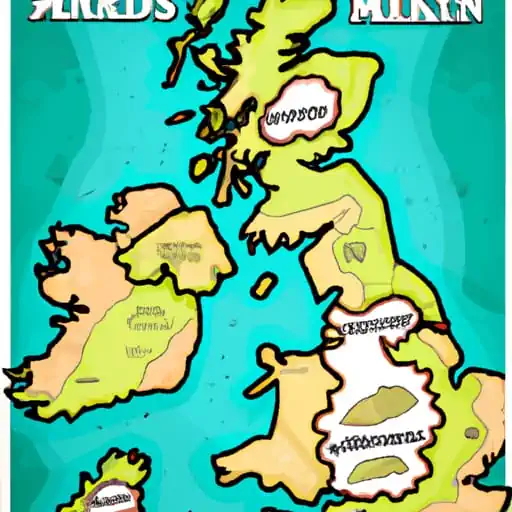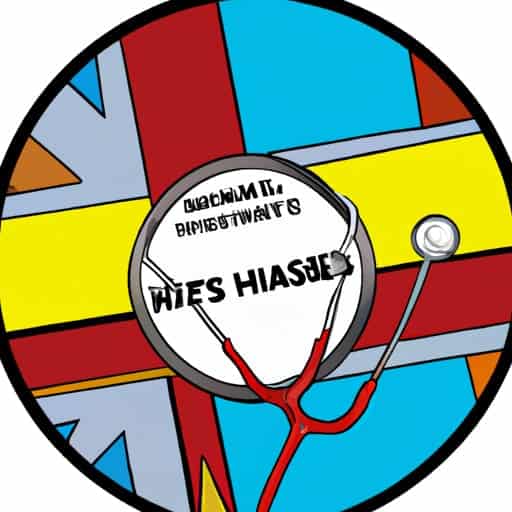How Much Does Depression Cost the NHS Each Year?

TL:DR: Total Costs
According to a report by the Mental Health Foundation and the London School of Economics and Political Science, mental health problems cost the UK economy an estimated £117.9 billion annually, accounting for approximately 5% of the country’s GDP.
In the United Kingdom, health economics experts say that the majority of this cost, 72%, is due to lost productivity from those living with mental health conditions and the costs associated with unpaid care.
The National Health Service in England spends an estimated £105.2 billion on mental health issues each year.
A study by NHS Digital showed that adults with common mental disorders, such as depression, have an average annual healthcare cost of £4989, with 19% coming from primary care and 34% from general hospital care.
A survey conducted in autumn 2022 found that one in six adults reported experiencing moderate to severe depressive symptoms. The rates of depression were higher among specific groups, such as those who had to borrow more money or use more credit than usual.
Champion Health report that 17% of the UK population suffered from depression during 2022.
The UK population in 2022 was 67,508,936.
If we multiply this by the average cost to the NHS for health care of £4989 per person.
I must admit I’m not confident it was 67,508,936 rather than 67,508,937 or that the average health cost was £4,989 per person rather than £4,900, but let’s just go with it.
So, the cost of depression to the NHS in 2022 was about £57, 256, 354, 737.81.
£57 billion.
Though it might be wildly under that. Also, that is just the healthcare cost of treatment and does not factor in the loss of production or the increased cost to business and services of paying overtime or getting in extra staff to cover any absences.
It’s a lot, anway.
Therefore: In conclusion, depression is a significant financial burden on the British National Health Service, costing billions of pounds annually.

Definition of Depression
The International Statistical Classification of Diseases and Related Health Problems, 10th Revision (ICD-10) is a widely used diagnostic manual that provides criteria for diagnosing various mental and behavioral disorders.
In the ICD-10, depression is classified as a depressive episode (F32) or recurrent depressive disorder (F33).To diagnose a depressive episode, the following criteria must be met:
- The individual must have experienced at least one of the following:
- a persistent low mood or loss of pleasure and interest in nearly all activities
- a marked reduction in energy, motivation and initiative
- The symptoms must have been present for at least two weeks.
- The symptoms must not be better accounted for by another mental disorder, physical illness, or substance abuse.
- The symptoms must cause clinically significant distress or impairment in social, occupational, or other important areas of functioning.
For a diagnosis of recurrent depressive disorder, the following criteria must be met:
- The individual must have experienced two or more depressive episodes in the past two years.
- The depressive episodes must not be better accounted for by another mental disorder, physical illness, or substance abuse.
- The individual must not have experienced a manic, mixed, or hypomanic episode in the past two years.
England
In 2021, according to the Office for National Statistics, 16% of adults in Great Britain experienced moderate to severe symptoms of depression.
The organization Mind reports that 1 in 6 people in England experience common mental health problems, like anxiety and depression, each week.
The percentage of people aged 17-19 with a probable mental disorder rose from 10.1% in 2017 to 17.4% in 2021.
Mental Health First Aid England states that 1 in 4 people experience mental health issues each year.
A study published by the National Center for Biotechnology Information found that over a five-year period, 55.4% of people had clinically significant symptoms of anxiety.

Scotland
The Scottish Health Survey of 2019 reported that the prevalence of depression in Scotland has fluctuated between 14% and 19% since 2003.
In 2021, 12% of men and 15% of women reported symptoms of depression. The Scottish economy is impacted by mental health problems to the tune of at least £8.8 billion annually, according to a report by the Mental Health Foundation and London School of Economics and Political Science.
In early 2021, approximately 21% of adults aged 16 and over in Great Britain experienced some form of depression, indicated by moderate to severe symptoms. Younger women were most likely to experience depression, with 28% of adults living in the most deprived areas reporting depressive symptoms, compared to 17% in the least deprived areas.
Wales
The Welsh Health Survey from 2008-2009 estimated the prevalence of depression in Wales to be around 10%.
However, this figure rose to 28.1% by April 2020 due to the impact of the COVID-19 pandemic, with disproportionate effects on women, young people, and those from Black, Asian, and Minority Ethnic (BAME) backgrounds.
The Mental Health – Stats Wales report provides information on patients admitted to mental health facilities and results from the census of patients in NHS mental health hospitals and units.
A study conducted by the Medical Research Council Cognitive Function and Ageing Study found that the prevalence of depression was 8.7%, rising to 9.7% when including subjects with concurrent dementia.
Northern Ireland
A survey of children and young people in Northern Ireland found that 12.6% experience common mood disorders such as anxiety and depression.
A poll by the Mental Health Foundation showed that 70% of adults in Northern Ireland have experienced a mental health issue in the past year.
The Office for Statistics Regulation’s review of mental health statistics revealed that Northern Ireland has the highest prevalence of mental health problems in the UK.
The organization AWARE reported a 60% increase in the number of adults diagnosed with depression in Northern Ireland since 2011.
Indirect Costs and social Care Costs
Depression often has indirect costs to an economy, including the costs of social care. Social care costs can include support for individuals with depression, such as assistance with daily living activities, transportation, and housing.
These costs can be significant and add to the overall burden of depression on the economy.
Additionally, in many cases, depression can lead to increased use of social services, such as hospitalization or institutionalization, which can result in higher costs for the government and society.
The indirect costs of depression can have a lasting impact on individuals, families, and communities, further highlighting the importance of addressing and treating this mental health condition.
Comparison to Other Health Conditions
Cost of Common Back Pain to the NHS
To get an idea of a meaningful comparison we can look at back pain. Back pain is a significant cost for the National Health Service, costing nearly £5 billion annually. It is also the primary cause of missed workdays in the UK, accounting for 40% of sickness absence in the NHS and resulting in a cost to the UK economy of £10 billion.
Approximately 20% of the population consults their GP regarding a musculoskeletal condition each year, with back pain alone costing the UK economy £20 billion annually.
Pain management services may be a cost-effective way to manage low back pain, but there is inconsistent evidence to support their use for this purpose.
Even though back pain is the most common cause of missed workdays, it only costs the NHS about half what depression costs each year.

Cost Estimates Conclusion
In conclusion, it is estimated that depression might very well cost the National Health Service (NHS) £57 billion in direct health costs alone in 2022. It’s important to keep in mind that this number could be off by a big margin.
The true cost of depression can be hard to calculate because of things like indirect costs and undiagnosed cases. Still, it’s clear that depression costs the NHS a lot of money and shows how important it is to keep investing in resources and support for mental health. In the end, it is thought that depression will cost the NHS £57 billion in direct health costs alone in 2022.
It’s important to keep in mind that this number could be off by a big margin. The true cost of depression can be hard to calculate because of things like indirect costs and undiagnosed cases. But it should give you an idea.
Still, it’s clear that depression costs the NHS a lot of money and shows how important it is to keep investing in resources and support for mental health.
Links To References
The National Health Service (NHS) website: https://www.nhs.uk/ – This website provides information about the NHS, including its budget and funding.
The Department of Health and Social Care (DHSC) website: https://www.gov.uk/government/organisations/department-of-health-and-social-care – This website provides information about the policies and strategies of the DHSC, which is responsible for the NHS in England.
The King’s Fund: https://www.kingsfund.org.uk/ – The King’s Fund is an independent think tank and charity that provides analysis and information about health and social care in England.
The London School of Economics and Political Science (LSE): https://www.lse.ac.uk/ – LSE is a leading social science university with a focus on economics and public policy, including health care policy. They have published several research papers and reports about the NHS and health care costs in the UK.
Related Posts on This Site
Treatment or Punishment For The Mentally Ill?
Bipolar Disorder Checklist: Symptoms and Criteria to Help with Accurate Diagnosis






